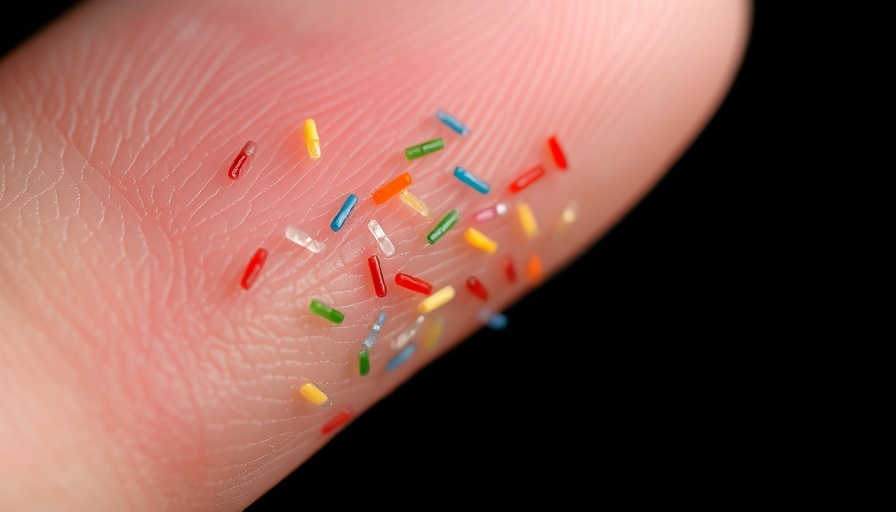
The Alarming Rise of Microplastics in Our Brains
In an age where convenience is paramount, microplastics have infiltrated our daily lives, and now scientists warn that these invisible particles might invade our most vital organ—the brain. Recent research from the University of New Mexico highlights a disturbing connection: higher concentrations of microplastics are found in the brains of individuals with dementia compared to those without the disease. This finding raises pressing questions about the health implications of our plastic consumer culture.
Understanding Microplastics: What Are They and How Do They Get Here?
Microplastics, defined as small plastic particles measuring less than 5 millimeters, can originate from a variety of sources, including degraded plastic waste and synthetic materials. Often, they enter the human body through food, water, and air. The UNM study identified twelve distinct types of plastics, with polyethylene, commonly used in packaging, leading the way. The concern lies in the ability of these tiny particles, especially those measuring 200 nanometers or smaller, to breach the blood-brain barrier—raising fears that plastic waste is not just an environmental issue but a potential health crisis.
An Unseen Threat: The Silent Accumulation of Plastics in Our Bodies
While it’s evident that microplastics accumulate in various organs, including the liver and kidneys, their presence in the brain is particularly alarming. The recent study indicated a staggering fifty percent increase in microplastic concentrations in brain tissue samples over the last eight years. As audiences in Maryland consider their health and wellness, it’s essential to understand how our lifestyle choices contribute to this growing problem, emphasizing the need for diligence in monitoring our plastic consumption.
Linking Microplastics and Dementia: Correlation Doesn’t Mean Causation
Matthew Campen, a leading toxicologist in the study, clarified that while there is a correlation between microplastic accumulation and dementia, causation remains uncertain. It raises the possibility that dementia could lead to increased microplastic absorption or vice versa. This complexity calls for more research, urging local health enthusiasts and advocates in Maryland to stay informed about emerging studies and public health discussions.
The Broader Implications: A Call for Conscious Living
This situation underscores an urgent need for awareness and lifestyle change. Understanding the harmful potential of microplastics can empower Maryland residents to advocate for better waste management practices and support local initiatives aimed at reducing plastic usage. With health and wellness at stake, knowledge becomes a powerful tool for fostering change.
Food Awareness: What You Eat Might Be Compromised
Earlier studies have already indicated that some common foods may contain microplastics, posing health risks aside from dementia. In light of this new research, individuals need to be more discerning about food sources and packaging. By choosing fresh, whole foods and being mindful of plastic packaging, we can reduce our exposure and advocate for healthier alternatives in our communities.
Steps Forward: What You Can Do
For those concerned about the escalating crisis of microplastics, there are actionable steps to take. Rethinking consumption—opting for glass or metal containers instead of plastics, supporting local environmental movements, and participating in community clean-up efforts can collectively contribute towards mitigating this risk. Becoming a proactive champion of sustainability can enhance personal health and encourage broader, systemic changes in our communities.
In summary, as we navigate the complexities of modern living, understanding the implications of microplastics on health—especially concerning neurodegenerative diseases—will be critical for health-conscious residents of Maryland. The call to action is clear: stay informed, make mindful choices, and be a contributor to positive change.
 Add Row
Add Row 
 Add Element
Add Element 


Write A Comment